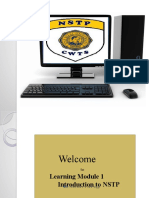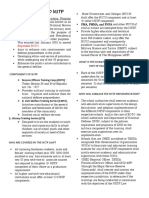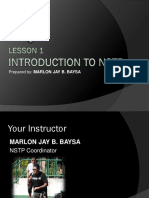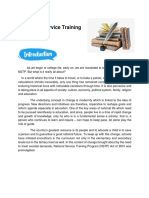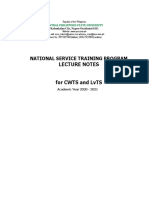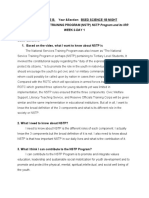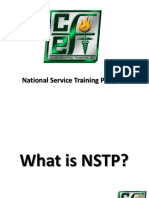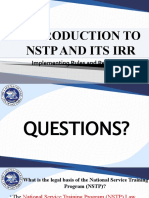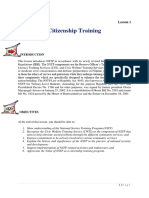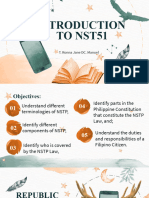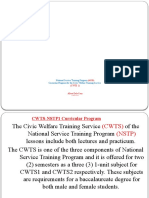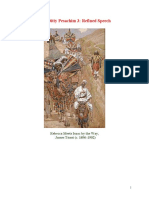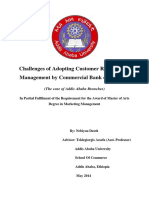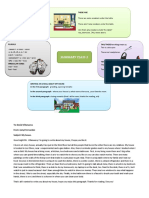0% found this document useful (0 votes)
19 views8 pagesNSTP Act: Civic Training for Students
The National Service Training Program (NSTP) aims to enhance civic consciousness and defense preparedness among students through three components: Reserved Officers’ Training Corps (ROTC), Literacy Training Service (LTS), and Civic Welfare Training Service (CWTS). NSTP is mandatory for all male and female freshmen in baccalaureate or technical-vocational courses and is credited for three units per semester. The program is overseen by various government agencies to ensure its effective implementation and to prepare students as active contributors to society.
Uploaded by
Deynold OrdonaCopyright
© © All Rights Reserved
We take content rights seriously. If you suspect this is your content, claim it here.
Available Formats
Download as DOCX, PDF, TXT or read online on Scribd
0% found this document useful (0 votes)
19 views8 pagesNSTP Act: Civic Training for Students
The National Service Training Program (NSTP) aims to enhance civic consciousness and defense preparedness among students through three components: Reserved Officers’ Training Corps (ROTC), Literacy Training Service (LTS), and Civic Welfare Training Service (CWTS). NSTP is mandatory for all male and female freshmen in baccalaureate or technical-vocational courses and is credited for three units per semester. The program is overseen by various government agencies to ensure its effective implementation and to prepare students as active contributors to society.
Uploaded by
Deynold OrdonaCopyright
© © All Rights Reserved
We take content rights seriously. If you suspect this is your content, claim it here.
Available Formats
Download as DOCX, PDF, TXT or read online on Scribd
/ 8
